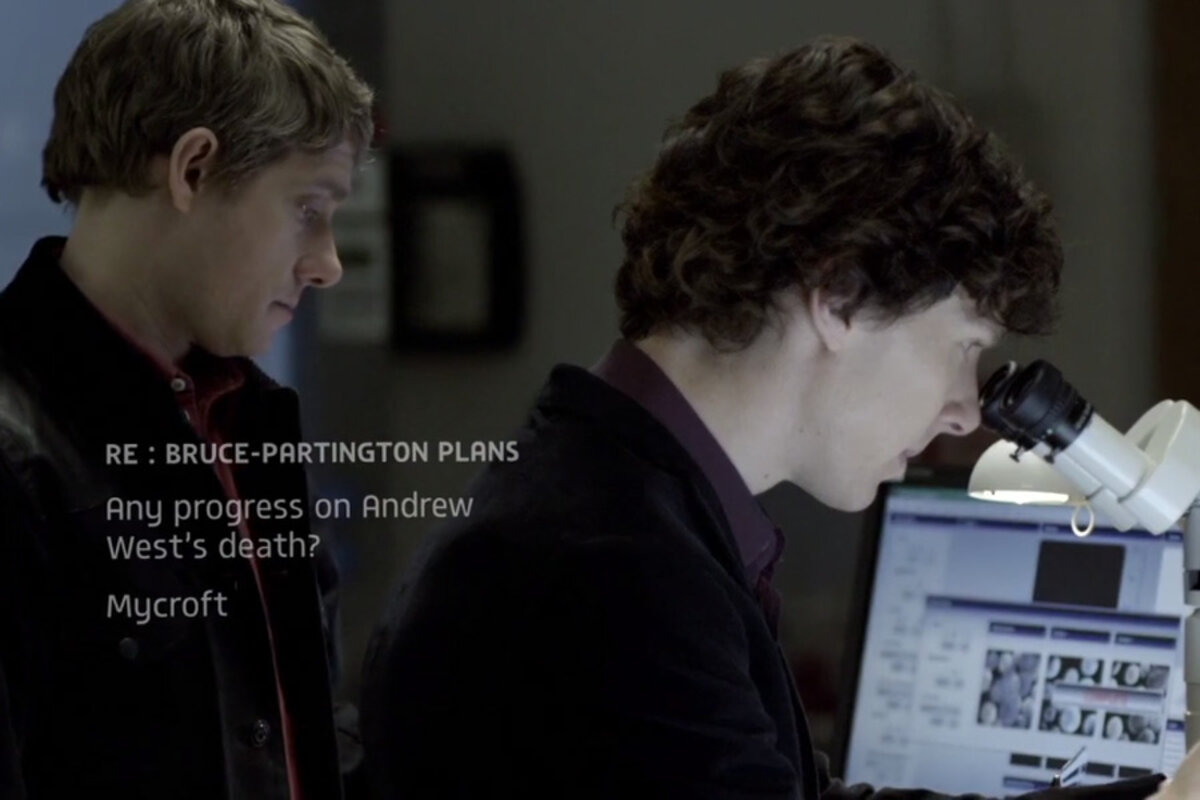From 'Sherlock' to 'House of Cards,' text messages become characters in film
Loading...
A new video by film critic explores how movies and TV shows experiment with artful ways of depicting our use of pocket-sized screens on the big screen.
As technology sinks deeper into our social skin, filmmakers have had to evolve how our texting and online habits are portrayed on screen.
Mr. Zhou’s video, “,” particularly examines the on-screen text message, where characters that are texting have their words running in real time on screen, instead of having the camera make multiple cuts back and forth from the phone’s screen to the character.
It seems audiences quickly tired of this kind of text-to-character visual ping-pong.
In fact, Zhou’s video explores the idea that text in itself has become an additional character and that filmmakers are now struggling to show us how that character interacts with the rest of the cast.
Should we see this new “character” in the most literal form – by showing the message coming in on a phone? Should it be free-floating words, color-coded to the speakers? Or should texts appear as a new form of subtitle, right on top of the action?
Essentially, texting has just made the leap from character limits on social media to unlimited character potential on film.
From the movie “Scott Pilgrim vs. the World,” where we heard every key tone and the movie “Catfish,” where characters are forced to read the messages aloud like a parent to an illiterate toddler, to the refined subtitled portrayal in the British TV series “Sherlock,” the search is on for ways to show text messages to an audience without boring them to death in the process.
“Is there a better way of showing a text message in a film? How about the Internet?” asks Zhou in his video. “Even though we’re well into the digital age, film is still ineffective at depicting the world we live in. Maybe the solution lies not in content, but in form.”
Zhou points out that perhaps the laziest approach is the work-around of having the scriptwriters simply punt the characters out of cell range. One example given is the 2006 film “The Hills Have Eyes.”
It seems that this issue, like so many other hot topics on the Internet, is just a few degrees of separation away from actor Benedict Cumberbatch in any given example.
Zhou repeatedly praises “Sherlock,” which stars Mr. Cumberbatch, for its “elegant design” in illustrating text messages as part of the action and plot development.
He also uses examples from Cumberbatch’s film “The Fifth Estate,” in which he played WikiLeaks founder Julian Assange as perhaps one of the poorer examples of portraying the Internet and its workings in film format.
While the “Sherlock” series lifted texting literally out of the box and placed it more in the realm of subtitles, “The Fifth Estate” used the confusing repetition of the actor cloned at multiple desktops to show how Assange fooled people into thinking he had a host of researchers when he was nearly alone in running WikiLeaks.
The film’s effect of a repeating pattern gave viewers batches of Cumberbatches sitting at computers, but, in the end, that visual metaphor offered little help to audiences trying to grasp the techno-whammy Mr. Assange pulled on the world.
There really is no agreed upon way to do this, yet. This new video may push you one way or another. However, filmmakers should keep experimenting and find a better way to give texting character on the big screen.





